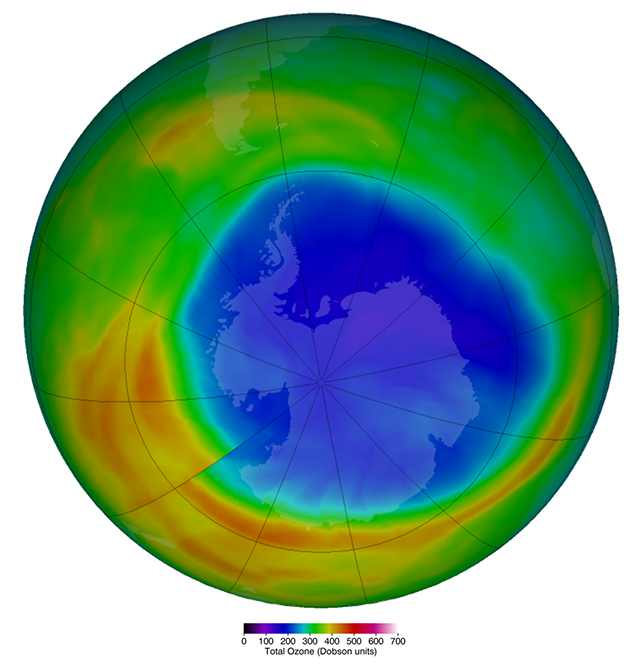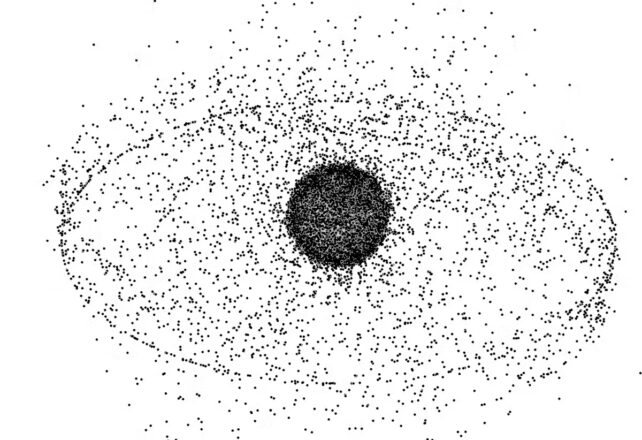At this time of year, when the sun rises over Antarctica, a “hole” opens in the Earth’s ozone layer.
The ozone layer is an important planetary boundary that protects all life on Earth from the sun’s damaging ultraviolet radiation. But as our research shows, a series of unusual events in recent years led to long-lasting ozone holes.
The Montreal Protocol, which came into force just four years after the ozone hole was discovered in 1985, has been largely successful in preventing many ozone-depleting gases from entering the atmosphere.
But the hole will continue to open every year for at least another four decades because of the longevity of the gas released last century.
Ozone depletion is also linked to climate change, and there are other emerging issues that could affect ozone recovery. These include more frequent wildfires due to climate change, emissions from rocket launches and more satellite debris burning up in space.
All this shows that ozone depletion is far from a solved problem.
Why is ozone important?
Most atmospheric ozone resides in the atmosphere, about 10-50 km above the Earth’s surface, where it absorbs the sun’s ultraviolet-B rays.
In New Zealand and Australia, maximum summer UV levels are higher – sometimes up to 30 percent – than at comparable latitudes in the Northern Hemisphere.
This is due to low levels of air pollution, historically low ozone levels and proximity to the sun, which is close during the Southern Hemisphere’s summer.
New Zealand and Australia also have the highest rates of melanoma in the world. This is due to higher UV levels, but there are other factors that contribute, including improved cognition due to increased awareness.
If the Montreal Protocol had not been implemented, melanoma rates would be much higher today.
How the ozone hole contributes to climate change
Although many ozone-depleting gases are now banned, it will take decades before they are removed from the atmosphere.

Meanwhile, the ozone hole continues to form over Antarctica each spring, causing changes in temperature, wind and precipitation patterns in the Antarctic.
Ozone depletion causes westerly winds in southern latitudes (the “Roaring Forties”) to strengthen and move toward Antarctica during the summer. This has increased the rate of surface melting on the Antarctic ice shelves and is changing the summer rainfall and temperature patterns in New Zealand and Australia.
While the ozone hole is causing climate change, protecting and restoring the ozone layer has additional benefits for the climate.
Many ozone-depleting gases, such as chlorofluorocarbons (CFCs) and hydrofluorocarbons (HFCs) are also potent greenhouse gases. By stopping these gases, the Montreal Protocol has helped the world avoid the collapse of the global ozone crisis, as well as reduce global warming.
One study estimated the Montreal Protocol delayed the first ice-free summer in the Arctic by up to 15 years.
Ozone depletion and climate change are related issues. While ozone depletion affects the climate of the Southern Hemisphere, global ozone recovery is affected by emissions of dominant greenhouse gases such as carbon dioxide, nitrogen oxides and methane.
Technological innovation brings new threats
The discovery of the ozone hole in 1985 was a big surprise. Although alarm bells had been sounded in the 1970s that CFCs destroy atmospheric ozone, scientists did not predict the existence of a large hole over Antarctica.
It was several years after the ozone hole was discovered that scientists began to understand how ozone depletion works in the cold Antarctic atmosphere.
The Montreal Protocol is arguably the most successful environmental treaty, but the story of ozone always surprises. The timing of ozone recovery depends to some extent on future emissions but there are other factors that contribute.
Recent research suggests large wildfires such as the 2019 Australian bushfires can contribute to ozone depletion. The increase in civilian rocket launches is expected to put more ozone-depleting gases and aerosols into the atmosphere.

High amounts of debris from satellite reentry can contribute to ozone loss by bringing aerosols into the upper atmosphere.
On top of these issues come controversial proposals for “geoengineering”, where aerosols are deliberately injected into the stratosphere to reduce the rate of global warming.
This could further damage the ozone and any such projects must be carefully considered – along with many other considerations before such proposals are implemented.
History tells us that technological innovation can bring solutions (such as the replacement of CFCs with ozone-depleting gases) but also unintended consequences. Far from being a “solved” problem of the 20th century, ozone remains an important issue, albeit in new and previously unimagined ways.![]()
Laura Revell, Associate Professor in Environmental Physics, University of Canterbury; Dan Smale, Principal Engineer, National Institute for Water and Atmospheric Research, and Richard McKenzie, Retired, National Institute for Water and Atmospheric Research.
This article is reprinted from The Conversation under a Creative Commons license. Read the original article.
#Reason #Ozone #Hole #Continue #Open #Decades